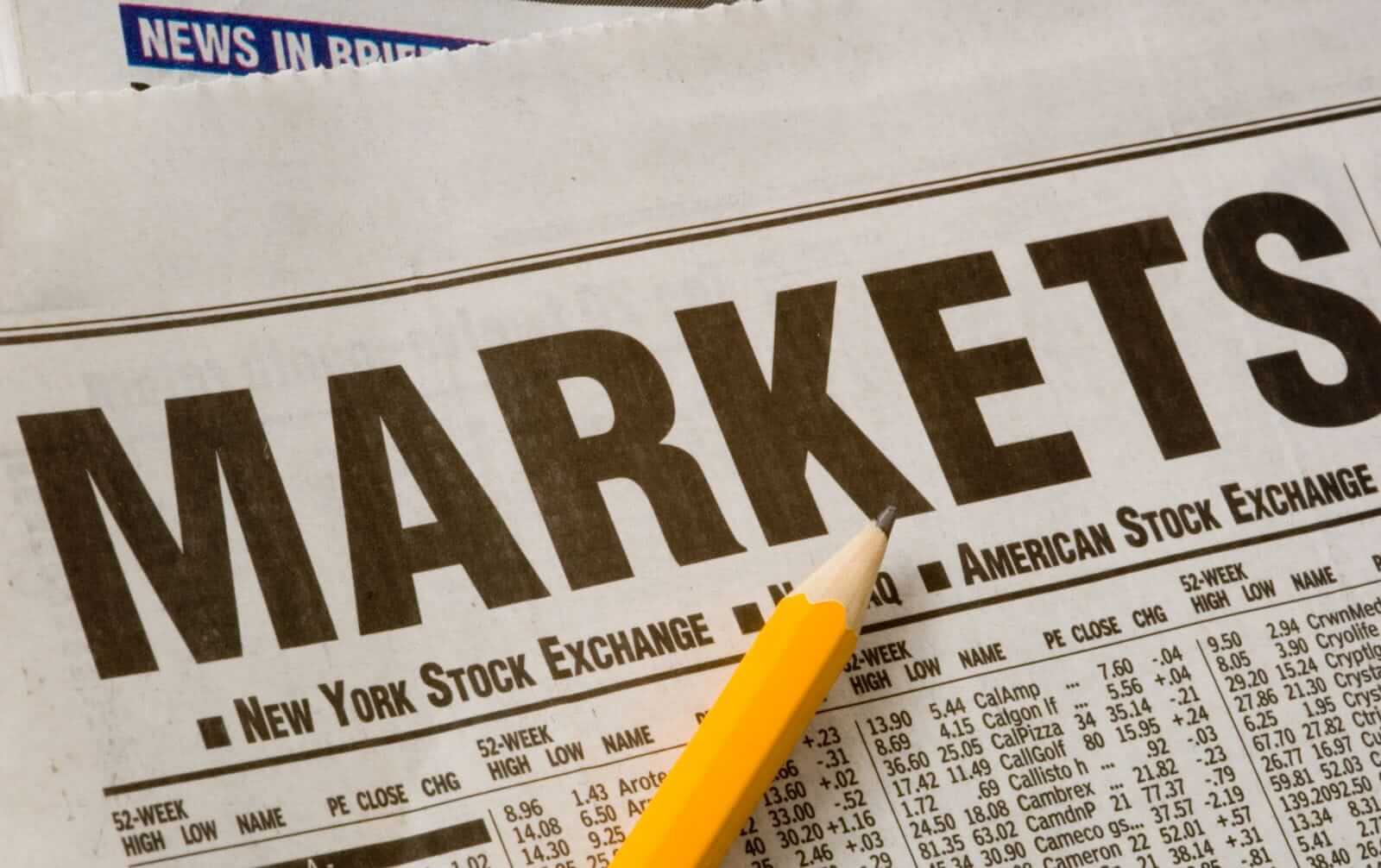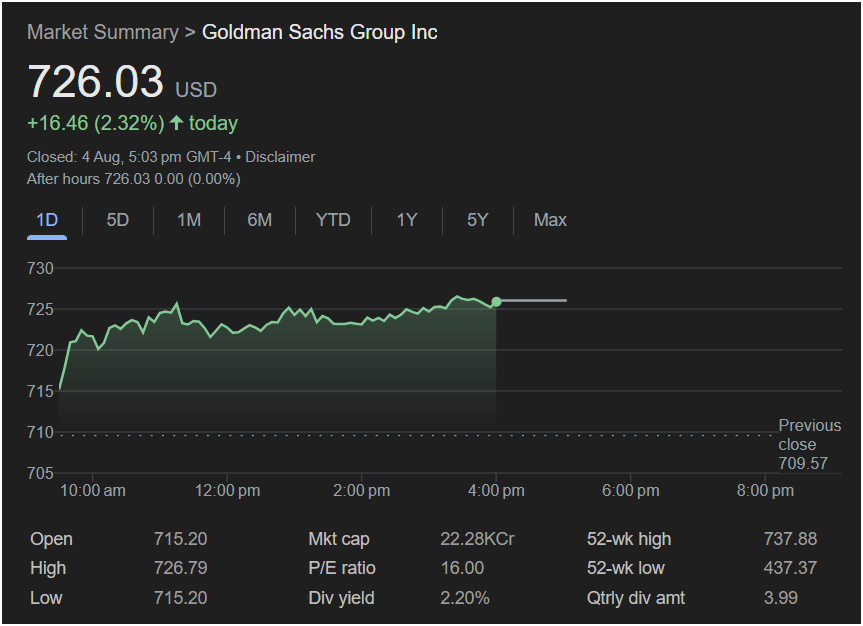Goldman Sachs Stock Soars Past $726, Flirting With 52-Week High Amid Market Optimism

NEW YORK, August 4, 2025 – Shares of banking giant Goldman Sachs Group Inc. (GS) surged on Monday, capping a powerful trading session that pushed the stock to one of its highest levels of the year. The stock closed at $726.03, marking a substantial single-day gain of $16.46, or 2.32%. The strong performance has investors closely watching to see if the financial titan can breach its 52-week high of $737.88 in the coming days.
The momentum was apparent from the opening bell. Goldman Sachs’ stock began the day at its low of $715.20 and climbed steadily throughout the session, reaching an intraday high of $726.79 before settling slightly at the close. The bullish sentiment held firm in after-hours trading, with the stock remaining unchanged. This rally comes as part of a broader positive trend for the company, whose market capitalization stood at approximately $209.77 billion as of Monday.[1] Over the past year, the company’s market cap has seen a significant increase of 33.80%.[1]
Behind the Bullish Charge: Earnings Beat and Sector Strength
The impressive rally isn’t occurring in a vacuum. It follows a period of strong financial performance and growing confidence in the broader financial sector. Last month, on July 16th, Goldman Sachs reported second-quarter earnings that comfortably beat analyst expectations. The firm posted earnings per share (EPS) of $10.91 on revenue of $14.58 billion, surpassing consensus estimates of $9.82 EPS and $13.53 billion in revenue.[2] This represented a robust 14.5% increase in revenue compared to the same quarter last year.[2]
This strong performance was fueled by a 24% year-over-year revenue increase in its Global Banking and Markets division, with the firm noting a significant uptick in capital markets activity and a growing M&A advisory backlog.[3] The Asset and Wealth Management division also reported a milestone, reaching a record $3.3 trillion in assets under supervision.[3]
The positive sentiment extends across the financial industry, which has been on a firmer footing in 2025.[4] Following a period of concern over regional bank stability in previous years, the sector has benefited from a resilient U.S. economy.[4] Many analysts believe that factors such as steady economic growth and a more predictable interest rate environment are creating tailwinds for financial stocks.[4] On Monday, investor focus was beginning to shift from the largely completed earnings season for banks to macroeconomic indicators, including upcoming data from the ISM services sector and speeches from Federal Reserve officials.[5]
Valuation and Shareholder Returns in Focus
From a valuation standpoint, Goldman’s current price-to-earnings (P/E) ratio stands at approximately 16.00.[6] This is moderately above its ten-year historical average of 12.39, suggesting that investors are willing to pay a premium for the stock based on its recent performance and future outlook.[7]
Shareholder returns have also been a bright spot. The company boasts a dividend yield of 2.20%. Reinforcing its commitment to shareholders, Goldman Sachs recently announced a dividend increase, raising its quarterly payout from $3.00 to $4.00 per share.[2][8] The next dividend, which has an ex-dividend date of August 29, 2025, reflects the firm’s strong financial position.[9][10] For the past 13 years, Goldman Sachs has consistently increased its dividend, signaling a reliable return for long-term investors.[11]
The stock’s performance over the past year paints a picture of a remarkable recovery. Trading near its 52-week high of $737.88, the share price has risen dramatically from its 52-week low of $437.37, representing a more than 54% increase over the past 12 months.[12]
Navigating the Path Ahead
Despite the strong momentum, the outlook remains complex. Analyst ratings for Goldman Sachs are currently mixed, with a consensus “Hold” rating from market observers.[2] Recent ratings show a spread of opinions, with five analysts issuing a “buy” rating, twelve recommending a “hold,” and one suggesting a “sell.”[2]
Investors are weighing the company’s strong execution against potential macroeconomic headwinds. Goldman Sachs itself has forecasted a weaker, though still positive, growth outlook for the U.S. economy in the second half of 2025.[13] The bank’s analysts point to a potential slowdown in domestic sales, offset by contributions from trade and inventory rebuilding.[13]
Key factors that will likely influence the stock’s trajectory include central bank policies, geopolitical developments, and the overall health of the global economy.[14][15] While many major world events have historically caused only temporary market shocks, sustained disruptions to global trade or economic fundamentals could present more significant challenges.[16] For now, the market appears to be rewarding Goldman Sachs for its robust earnings and its influential position as the heaviest-weighted stock in the Dow Jones Industrial Average.




